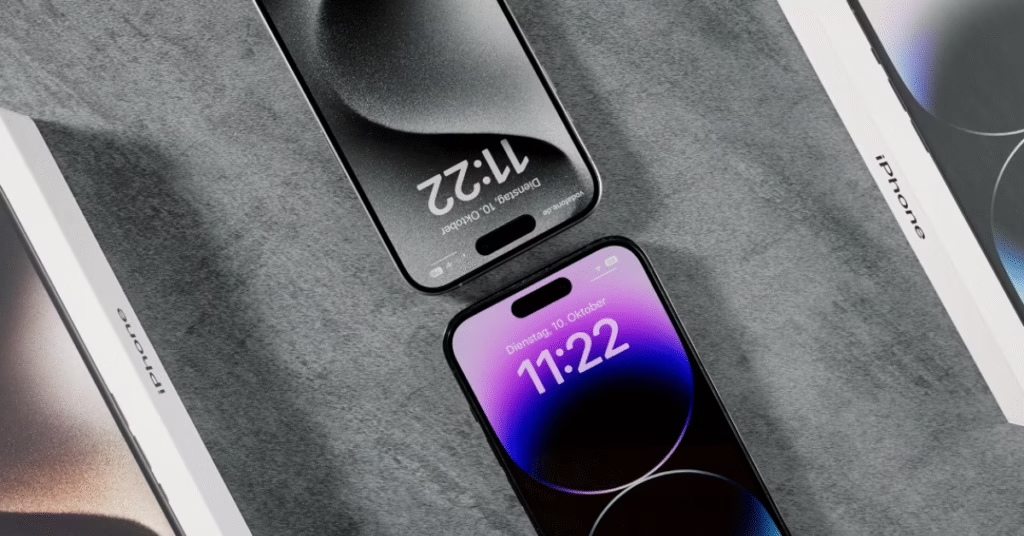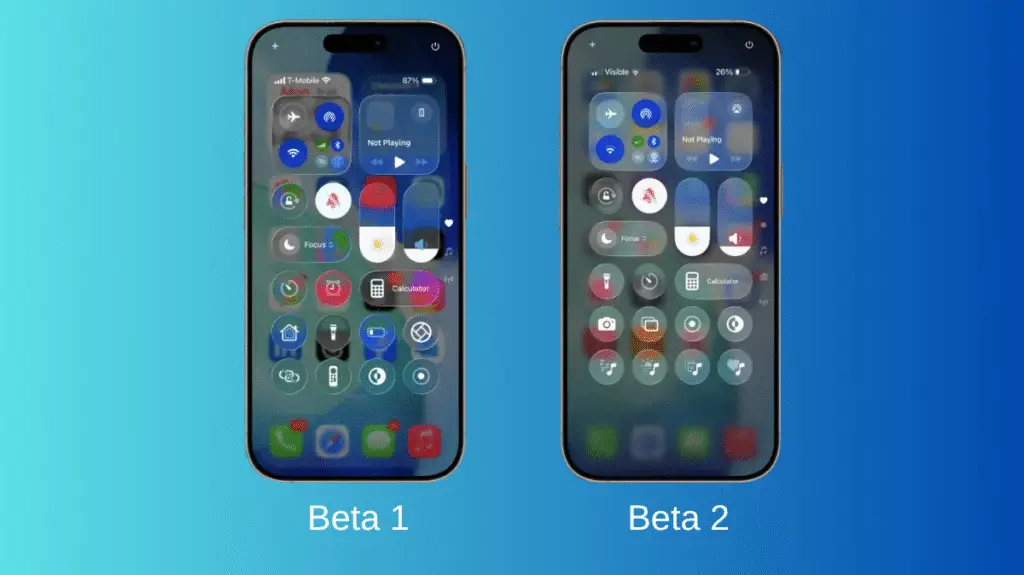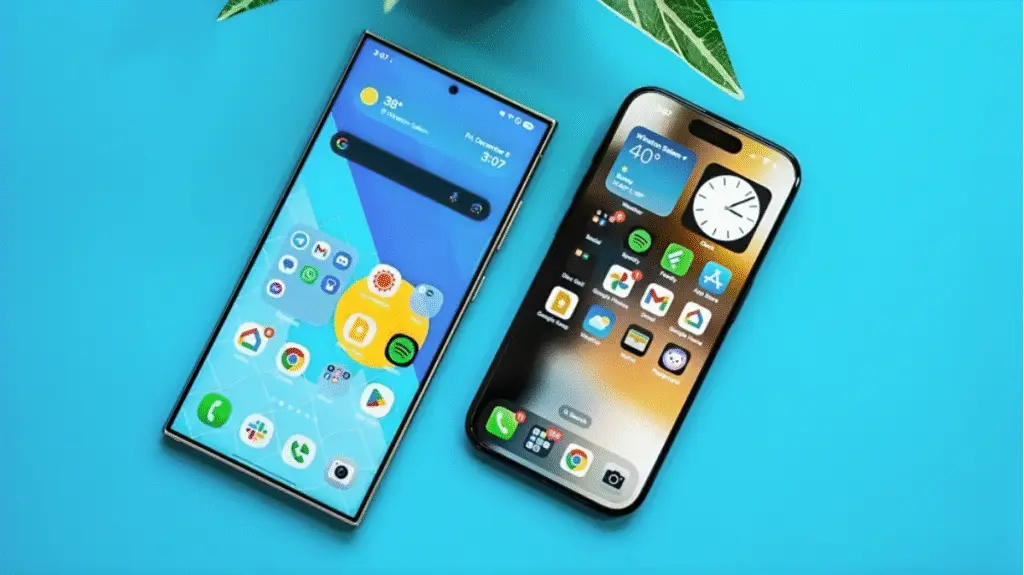
When Apple launches a new iPhone, the first question many people ask is whether it’s worth upgrading from last year’s model. The iPhone 14 Pro vs iPhone 15 Pro debate is at the center of that discussion today. Both devices are premium flagships with advanced features, but the changes Apple made in 2023 are more subtle than radical.
From design tweaks to the powerful A17 Pro chip, and from improved camera processing to the move from Lightning to USB-C, the 15 Pro represents Apple’s gradual evolution rather than a dramatic leap. Let’s explore how these two phones compare in real-world use, and whether the latest model justifies its higher price tag.
Design and Build
At first glance, the two models look almost identical. Both come in a compact 6.1-inch size with Apple’s signature flat-edged look. But the differences are in the details.
The iPhone 14 Pro uses a stainless steel frame, which gives it a solid, slightly heavier feel. The iPhone 15 Pro swaps that material for titanium, making it considerably lighter without sacrificing durability. Apple also rounded the edges slightly, so the new model feels more comfortable in the hand.
Both phones are IP68 rated, meaning they can withstand dust and submersion in water. Early reports suggested the titanium frame was more prone to breaking, but those claims have largely been debunked.
One other design shift is the replacement of the classic alert slider with an Action Button on the 15 Pro. This button can be customized to launch apps, trigger shortcuts, or perform specific tasks, making it more versatile than the old mute switch.
Quick Comparison
| Specification | iPhone 14 Pro | iPhone 15 Pro |
|---|---|---|
| Build | Stainless Steel, Flat edges | Titanium, Lighter, Rounded edges |
| Weight | 206g | 187g |
| Display | 6.1″ OLED, 120Hz, HDR10+, Dolby Vision | 6.1″ OLED, 120Hz, HDR10+, Dolby Vision (thinner bezels) |
| Chipset | A16 Bionic (4nm) | A17 Pro (3nm, better CPU/GPU, hardware ray tracing) |
| RAM | 6GB | 8GB |
| Storage Options | 128GB / 256GB / 512GB / 1TB | 128GB / 256GB / 512GB / 1TB |
| Cameras | 48MP main + 12MP ultra-wide + 12MP telephoto | 48MP main (24MP default) + 12MP ultra-wide + 12MP telephoto |
| Front Camera | 12MP | 12MP |
| Special Button | Mute Switch | Action Button (customizable) |
| Port | Lightning (USB 2.0) | USB-C (USB 3.0, Reverse Wired Charging) |
| Battery Life | 86 hours endurance rating | 86 hours endurance rating (slightly faster full charge) |
| Charging | ~60% in 30 min (20W+ adapter) | ~57% in 30 min (20W+ adapter), Full ~93 min |
| Software | iOS 17 (1 year less updates) | iOS 17 (longer update support) |
Disclaimer: Specs may vary by region. Always confirm with Apple’s official website or authorized retailers.
Display Quality
Both devices feature Apple’s superb 6.1-inch OLED display with Ceramic Shield protection, a 120Hz adaptive refresh rate, and HDR10+ and Dolby Vision support. The pill-shaped cutout housing the front camera and Face ID hardware doubles as the Dynamic Island, showing real-time information and app shortcuts.
The displays are nearly identical, delivering excellent brightness, contrast, and color accuracy. The 15 Pro has slightly thinner bezels, but the difference is subtle and unlikely to matter for most users.
Speakers and Audio
Apple has consistently delivered high-quality stereo speakers on its Pro models, and both the iPhone 14 Pro and iPhone 15 Pro continue that trend. The 15 Pro edges ahead slightly with deeper bass, but both phones offer loud, clear sound that works well for media and gaming.
Software Experience
Both devices run iOS 17, giving them the same software features and smooth performance. However, since the 14 Pro is a year older, it will receive one fewer year of updates compared to the 15 Pro. For buyers who want maximum longevity, the new model has the advantage.
Another major difference lies in connectivity. The iPhone 14 Pro still uses Apple’s Lightning port, while the iPhone 15 Pro adopts USB-C. This change opens the door to universal charging and more versatile connections. On the 15 Pro, you can connect external displays, storage devices, and accessories directly. It even supports reverse wired charging, letting you top up smaller gadgets like AirPods.
Performance and Hardware
This is where Apple made one of the biggest changes.
The iPhone 14 Pro is powered by the A16 Bionic chip, which is still an extremely fast processor for everyday tasks and gaming. The iPhone 15 Pro, however, comes with the A17 Pro chip, Apple’s first chip built on a 3-nanometer process.
In benchmarks, the new chip delivers around 10% better CPU performance and up to 20% better graphics performance compared to the A16. More importantly, it introduces hardware-accelerated ray tracing, making graphics rendering in games far more realistic. While most current apps and games run perfectly on both devices, the A17 Pro ensures the 15 Pro is more future-proof.
Battery Life and Charging
Surprisingly, battery life hasn’t changed much. Both devices pack nearly the same battery capacity, earning similar endurance ratings in testing. In everyday use, you can expect solid all-day performance from both phones.
Charging speeds remain modest compared to competitors. Both charge to just under 60% in 30 minutes with the right adapter. The iPhone 15 Pro reaches a full charge in about 93 minutes, slightly faster than the 14 Pro, but neither is what you’d call fast-charging by modern standards. The reverse charging feature on the 15 Pro(wired reverse charging only), however, adds some practical flexibility.
Cameras and Photography
On paper, the camera systems look identical:
- 48MP main camera
- 12MP ultrawide camera
- 12MP 3x telephoto camera
- LiDAR scanner
But Apple has made changes to the image processing on the iPhone 15 Pro. By default, its main camera captures 24MP photos, compared to the 12MP default output of the 14 Pro. The result is images with more detail and a more natural look.
In good lighting, both phones deliver excellent results with Apple’s signature color science, but the 15 Pro’s photos often look sharper and more true to life. In low light, the difference is also noticeable, with the newer model capturing slightly better detail.
Telephoto and ultrawide shots remain very similar between the two, and both devices can record video at up to 4K with excellent stabilization. For content creators, either phone will perform exceptionally well, though the 15 Pro edges out in still photography.
Everyday Use and Longevity
When comparing the iPhone 14 Pro vs iPhone 15 Pro, the experience in daily use is surprisingly close. Both phones are fast, smooth, and reliable, with premium displays and cameras that rank among the best in the industry.
The differences come down to weight, build materials, chip performance, and a few new tricks like USB-C support and improved photo processing. These are meaningful upgrades, but not revolutionary ones.
Availability and Price
The iPhone 14 Pro is no longer listed on Apple’s official website, but you can still buy it through third-party retailers at a lower cost than the new model. The iPhone 15 Pro, on the other hand, comes at a premium price, as expected for Apple’s latest flagship. For many buyers, the pricing difference will play a big role in deciding whether to stick with last year’s Pro or jump to the new one.
Which One Should You Buy?
If you already own an iPhone 14 Pro, upgrading to the 15 Pro isn’t a must unless you value the lighter titanium build, future-proofed performance, and small but noticeable camera improvements. For many users, the 14 Pro will remain more than capable for several years.
If you’re coming from an older iPhone or switching from another brand, the iPhone 15 Pro is the better long-term investment thanks to its new chip, extra software support, and universal USB-C connectivity.
Budget also plays a key role. Since the iPhone 14 Pro is cheaper at third-party retailers, it offers excellent value for those who don’t need the very latest features.
Conclusion
The iPhone 14 Pro vs iPhone 15 Pro comparison highlights Apple’s evolutionary approach to its flagship phones. The 15 Pro delivers refinements that improve the user experience, but the core features remain familiar.
The titanium frame, A17 Pro chip, improved photo quality, and USB-C make the 15 Pro the most advanced compact iPhone yet. However, the iPhone 14 Pro still stands strong, especially at a lower price point.
In the end, your choice depends on whether you prioritize having Apple’s latest technology or prefer saving money while still enjoying a premium flagship experience.
See Also Apple iPhone 17 Review: Familiar Design, Big Inside Upgrades
FAQs
Is it worth upgrading from iPhone 14 Pro to iPhone 15 Pro?
If you already own an iPhone 14 Pro, the upgrade isn’t essential unless you want the lighter titanium frame, the A17 Pro chip for gaming, USB-C connectivity, or slightly better camera performance.
What are the main differences between iPhone 14 Pro and iPhone 15 Pro?
The iPhone 15 Pro is lighter thanks to a titanium frame, has the faster A17 Pro chip, USB-C support with reverse charging, and improved main camera processing. The rest of the features are quite similar.
Do both iPhone 14 Pro and 15 Pro support Dynamic Island?
Yes, both models feature Dynamic Island, offering interactive notifications and shortcuts around the front camera cutout.
How much faster is the A17 Pro chip compared to A16 Bionic?
The A17 Pro delivers around 10% faster CPU performance and up to 20% better graphics, with added hardware-accelerated ray tracing for gaming.
Which iPhone has better cameras?
Both have nearly identical setups, but the iPhone 15 Pro captures 24MP photos by default, offering sharper and more natural-looking images compared to the iPhone 14 Pro’s 12MP default output.
Does the iPhone 15 Pro have better battery life than the 14 Pro?
Battery life is almost the same, but the 15 Pro offers reverse wired charging via USB-C, which the 14 Pro lacks.
Which one is more affordable?
The iPhone 14 Pro is generally cheaper now through third-party retailers, making it a strong choice if you want flagship performance at a lower price.



